Opinion & Analysis
The data behind Keegan Bradley’s coaching change
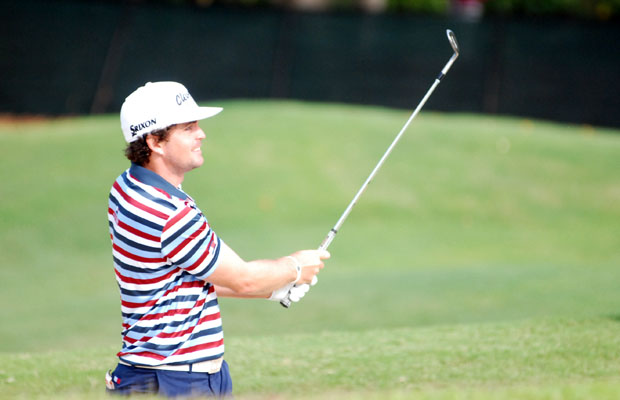
Keegan Bradley has reportedly left long-time swing coach Jim McLean for Chuck Cook, who teaches Bradley’s good friend Jason Dufner and Luke Donald. That gives Cook one of the most formidable list of clients in the golf world, as Bradley is ranked No. 20 in the Official World Golf Rankings, Dufner is ranked No. 15 and Donald is ranked No. 17.
I wanted to take a look at the numbers behind Bradley’s game and to see why he may have decided to change instructors. According to Bradley, the change was prompted by his familiarily with the instructor.
“I’ve been around Chuck Cook for a few years now, playing practice rounds with Dufner,” Bradley told Back9Network’s Ahmad Rashad. “I’m excited to get working with Chuck and get another opinion of how he thinks I can improve my golf game. He’s been around for a long time and I know he has several ways he can help me win.”
Bradley did not record a victory last season, but still finished No. 11 on the money list. When I look at a golfer’s game, I like to first analyze his or her scoring data. This helps me formulate some sort of idea of as to what went on with the golfer and provide a profile of the player’s game as far as his or her strengths and weaknesses go.
Bradley ranked No. 10 in Total Adjusted Scoring Average. Taking that into account and his rankings in the metrics in the table above, he still had a great season despite not coming away with a victory. I feel with these metrics that Bradley should be striving toward being the No. 1-ranked golfer in the world. He does not have a glaring weakness, and is instead trying to take his great game to the next level.
If Bradley is going to contend for the No. 1 spot, he will need to get inside the top 10 in Adjusted Par-4 Scoring Average. Par-4 play has the strongest correlation to Tour success of the metrics listed above. This is partially due to the number of par-4’s played per round (the Tour average is roughly 11 played per round), and the par-4’s require a more complete game to play them well. Bradley did a fine job in 2013 on the par-4’s. However, in order to contend for the No. 1 ranking in the world that will have to step up.
The biggest “weakness” we see with Bradley’s game is his play on the par-3’s. While par-3 play is important, it has the lowest correlation to success on Tour of the metrics listed. With that said, par-3 play is one part iron play, one part short game and one part long putting (putts longer than 15 feet). While Bradley was still an above-average player on the par-3’s, given that it was his weakest metric, I can start to develop an idea of what some of his issues in 2013 were.
Lastly, he had a fantastic year at avoiding bogies. Avoiding bogies has a stronger correlation to success on Tour than making birdies. He also made a high percentage of birdies. But, for him to contend for the No. 1 ranking in the world, he needs to get into the top 10 in both Birdie and Bogey rates. Furthermore, I find it a bit peculiar that the No. 1-ranked player on par-5’s ranked 24th in Birdie Rate. In all, I can start to envision a profile for Bradley’s game.
DRIVING DATA
I utilize an algorithm based on historical driving data on Tour dating back to 2007 to determine a golfer’s effectiveness off the tee. This is called Driving Effectiveness which utilizes the following metrics:
- Distance
- Fairway Percentage
- Average Distance to Edge of Fairway (on drives that miss the fairway)
- Fairway Bunker Percent
- Missed Fairway – Other Percent (shots that end up in a hazard, O.B. rescue shots, etc)
Here is Bradley’s data for 2013
As we can see, driving was rarely a problem for Bradley in 2013, as he was the second most effective driver of the ball (only Henrik Stenson was more effective). Bradley hits the ball a long way and hits a lot of fairways. And when he missed the fairway, he did not miss by much and did a fine job at avoiding fairway bunkers and other trouble. He has been one of the premier drivers on Tour since he earned his card.
PUTTING AND SHORT GAME DATA
Often times, putting and short game play can be over-valued by golfers. However, nothing can prevent a golfer from winning a tournament like poor putting. In fact, nearly 70 percent of the winners on Tour this year finished in the top 10 in Putts Gained (also called Strokes Gained-Putting) for that tournament.
Bradley putted very well in 2013 from most distances. As I have mentioned in the past, the putts from 3-to-15 feet are the most important putts to make when it comes to affecting a player’s performance versus the field. Outside of 15 feet, the make percentage for Tour players becomes very volatile. What I mean is that golfers on Tour, regardless of overall putting skill, tend to be very inconsistent when it comes to make percentage outside of 15 feet. One year they can make a lot of putts from outside 15 feet, and the next year they struggle to make those same putts.
This would explain some of the issues that Bradley had on the par-3’s. Tour players are not likely to have a lot of close birdie putts on the par-3’s, and that is why par-3 performance is dependent on the golfer’s ability to make putts outside of 15 feet. However, Bradley’s make percentage on putts outside of 15 feet is likely to progress toward the mean. Therefore, his performance on the par-3’s is likely to progress in 2014.
Sometimes the problem with good overall putters on Tour is that they were inconsistent with their putting. When they were off, they were well off. And when they were on, they were making a lot of putts. And if they putt poorly in too many tournaments, they reduce their odds of winning those events. Here’s a chart looking at Bradley’s putts gained by event.
Out of the 20 events that recorded putts gained, Bradley was only losing strokes to the field on six of those events.
Here is a look at Bradley’s short game play:
Bradley was an average short game player in 2013. But he did perform well from the most important part of the short game, longer pitch shots from 10-to-20 yards. This could also explain why he was better at avoiding bogies than making birdies. The 10-to-20 yard shots are usually more reserved for when the player needs to save par. The 1-to-10 yard shots are more makeable chip shots.
After looking at the data I see no reason why Bradley cannot contend for the No.1 spot in the world ranking based off his driving, putting and short game data. This only leaves approach shots.
APPROACH SHOT DATA
Here is Bradley’s approach shot data for 2013:
The good news is that the area that correlates strongest to success on Tour, the Danger Zone, is where Bradley was his strongest. Shorter shots, particular wedge play, are vastly overrated by the golfing community. This is why Bradley still had a fantastic year. His long game, both driving and Danger Zone play, was superb. This is where a golfer can gain the most strokes against the field over time.
Here’s a look at Bradley’s rankings from the various zones since he made the Tour:
We can see that Bradley has had issues with his iron play since he has made the Tour. His play from the Danger Zone has improved dramatically, and that has helped propel him into superstar status. But the play from the Birdie and Safe zones is what is holding him back. We also have to remember that his Safe Zone play is even worse than the ranking indicates because he was such an exceptional driver of the ball, which means he should have been in great position to hit a lot of Safe Zone shots closer to the hole.
His struggles from 75 to 175 yards would be part of the reason why he lagged a little behind on the par-3’s. It would also explain why his Birdie Rate was not better, as most birdies on the par-4’s come from Safe Zone and Birdie Zone approach shots.
All of these “issues” are nice issues for a player to have. I would expect that most of Bradley’s work with Cook will focus on improving his iron play from inside 175 yards. The key for him to take his game to the next level will be keeping his effectiveness off the tee and his skill on and around the greens while improving his iron play.
- LIKE1
- LEGIT0
- WOW0
- LOL0
- IDHT0
- FLOP0
- OB0
- SHANK0
19th Hole
Vincenzi’s LIV Golf Singapore betting preview: Course specialist ready to thrive once again

After another strong showing in Australia, LIV Golf will head to Sentosa Golf Club in Singapore looking to build off of what was undoubtedly their best event to date.
Sentosa Golf Club sits on the southern tip of Singapore and is one of the most beautiful courses in the world. The course is more than just incredible scenically; it was also rated 55th in Golf Digest’s top-100 courses in 2022-2023 and has been consistently regarded as one of the best courses in Asia. Prior to being part of the LIV rotation, the course hosted the Singapore Open every year since 2005.
Sentosa Golf Club is a par 71 measuring 7,406 yards. The course will require precise ball striking and some length off the tee. It’s possible to go low due to the pristine conditions, but there are also plenty of hazards and difficult spots on the course that can bring double bogey into play in a hurry. The Bermudagrass greens are perfectly manicured, and the course has spent millions on the sub-air system to keep the greens rolling fast. I spoke to Asian Tour player, Travis Smyth, who described the greens as “the best [he’s] ever played.”
Davis Love III, who competed in a Singapore Open in 2019, also gushed over the condition of the golf course.
“I love the greens. They are fabulous,” the 21-time PGA Tour winner said.
Love III also spoke about other aspects of the golf course.
“The greens are great; the fairways are perfect. It is a wonderful course, and it’s tricky off the tee.”
“It’s a long golf course, and you get some long iron shots. It takes somebody hitting it great to hit every green even though they are big.”
As Love III said, the course can be difficult off the tee due to the length of the course and the trouble looming around every corner. It will take a terrific ball striking week to win at Sentosa Golf Club.
In his pre-tournament press conference last season, Phil Mickelson echoed many of the same sentiments.
“To play Sentosa effectively, you’re going to have a lot of shots from 160 to 210, a lot of full 6-, 7-, 8-iron shots, and you need to hit those really well and you need to drive the ball well.”
Golfers who excel from tee to green and can dial in their longer irons will have a massive advantage this week.
Stat Leaders at LIV Golf Adelaide:
Fairways Hit
1.) Louis Oosthuizen
2.) Anirban Lahiri
3.) Jon Rahm
4.) Brendan Steele
5.) Cameron Tringale
Greens in Regulation
1.) Brooks Koepka
2.) Brendan Steele
3.) Dean Burmester
4.) Cameron Tringale
5.) Anirban Lahiri
Birdies Made
1.) Brendan Steele
2.) Dean Burmester
3.) Thomas Pieters
4.) Patrick Reed
5.) Carlos Ortiz
LIV Golf Individual Standings:
1.) Joaquin Niemann
2.) Jon Rahm
3.) Dean Burmester
4.) Louis Oosthuizen
5.) Abraham Ancer
LIV Golf Team Standings:
1.) Crushers
2.) Legion XIII
3.) Torque
4.) Stinger GC
5.) Ripper GC
LIV Golf Singapore Picks
Sergio Garcia +3000 (DraftKings)
Sergio Garcia is no stranger to Sentosa Golf Club. The Spaniard won the Singapore Open in 2018 by five strokes and lost in a playoff at LIV Singapore last year to scorching hot Talor Gooch. Looking at the course setup, it’s no surprise that a player like Sergio has played incredible golf here. He’s long off the tee and is one of the better long iron players in the world when he’s in form. Garcia is also statistically a much better putter on Bermudagrass than he is on other putting surfaces. He’s putt extremely well on Sentosa’s incredibly pure green complexes.
This season, Garcia has two runner-up finishes, both of them being playoff losses. Both El Camaleon and Doral are courses he’s had success at in his career. The Spaniard is a player who plays well at his tracks, and Sentosa is one of them. I believe Sergio will get himself in the mix this week. Hopefully the third time is a charm in Singapore.
Paul Casey +3300 (FanDuel)
Paul Casey is in the midst of one of his best seasons in the five years or so. The results recently have been up and down, but he’s shown that when he’s on a golf course that suits his game, he’s amongst the contenders.
This season, Casey has finishes of T5 (LIV Las Vegas), T2 (LIV Hong Kong), and a 6th at the Singapore Classic on the DP World Tour. At his best, the Englishman is one of the best long iron players in the world, which makes him a strong fit for Sentosa. Despite being in poor form last season, he was able to fire a Sunday 63, which shows he can low here at the course.
It’s been three years since Casey has won a tournament (Omega Dubai Desert Classic in 2021), but he’s been one of the top players on LIV this season and I think he can get it done at some point this season.
Mito Pereira +5000 (Bet365)
Since Mito Pereira’s unfortunate demise at the 2022 PGA Championship, he’s been extremely inconsistent. However, over the past few months, the Chilean has played well on the International Series as well as his most recent LIV start. Mito finished 8th at LIV Adelaide, which was his best LIV finish this season.
Last year, Pereira finished 5th at LIV Singapore, shooting fantastic rounds of 67-66-66. It makes sense why Mito would like Sentosa, as preeminent ball strikers tend to rise to the challenge of the golf course. He’s a great long iron player who is long and straight off the tee.
Mito has some experience playing in Asia and is one of the most talented players on LIV who’s yet to get in the winner’s circle. I have questions about whether or not he can come through once in contention, but if he gets there, I’m happy to roll the dice.
Andy Ogletree +15000 (DraftKings)
Andy Ogletree is a player I expected to have a strong 2024 but struggled early in his first full season on LIV. After failing to crack the top-25 in any LIV event this year, the former U.S. Amateur champion finally figured things out, finished in a tie for 3rd at LIV Adelaide.
Ogletree should be incredible comfortable playing in Singapore. He won the International Series Qatar last year and finished T3 at the International Series Singapore. The 26-year-old was arguably the best player on the Asian Tour in 2023 and has been fantastic in the continent over the past 18 months.
If Ogletree has indeed found form, he looks to be an amazing value at triple-digit odds.
- LIKE3
- LEGIT3
- WOW1
- LOL2
- IDHT0
- FLOP2
- OB0
- SHANK0
Opinion & Analysis
Ryan: Lessons from the worst golf instructor in America

In Tampa, there is a golf course that boasts carts that do not work, a water range, and a group of players none of which have any chance to break 80. The course is overseen by a staff of crusty men who have succeeded at nothing in life but ending up at the worst-run course in America. However, this place is no failure. With several other local courses going out of business — and boasting outstanding greens — the place is booked full.
While I came for the great greens, I stayed to watch our resident instructor; a poor-tempered, method teacher who caters to the hopeless. At first, it was simply hilarious. However, after months of listening and watching, something clicked. I realized I had a front-row seat to the worst golf instructor in America.
Here are some of my key takeaways.
Method Teacher
It is widely accepted that there are three types of golf instructors: system teachers, non-system teachers, and method teachers. Method teachers prescribe the same antidote for each student based on a preamble which teachers can learn in a couple day certification.
Method teaching allows anyone to be certified. This process caters to the lowest caliber instructor, creating the illusion of competency. This empowers these underqualified instructors with the moniker of “certified” to prey on the innocent and uninformed.
The Cult of Stack and Jilt
The Stack and Tilt website proudly boasts, “A golfer swings his hands inward in the backswing as opposed to straight back to 1) create power, similar to a field goal kicker moving his leg in an arc and 2) to promote a swing that is in-to-out, which produces a draw (and eliminates a slice).”
Now, let me tell you something, there is this law of the universe which says “energy can either be created or destroyed,” so either these guys are defying physics or they have no idea what they are taking about. Further, the idea that the first move of the backswing determines impact is conjecture with a splash of utter fantasy.
These are the pontifications of a method — a set of prescriptions applied to everyone with the hope of some success through the placebo effect. It is one thing for a naive student to believe, for a golf instructor to drink and then dispel this Kool-Aid is malpractice.
Fooled by Randomness
In flipping a coin, or even a March Madness bet, there is a 50-50 chance of success. In golf, especially for new players, results are asymmetric. Simply put: Anything can happen. The problem is that when bad instructors work with high handicappers, each and every shot gets its own diagnosis and prescription. Soon the student is overwhelmed.
Now here’s the sinister thing: The overwhelming information is by design. In this case, the coach is not trying to make you better, they are trying to make you reliant on them for information. A quasi Stockholm syndrome of codependency.
Practice
One of the most important scientists of the 20th century was Ivan Pavlov. As you might recall, he found that animals, including humans, could be conditioned into biological responses. In golf, the idea of practice has made millions of hackers salivate that they are one lesson or practice session from “the secret.”
Sunk Cost
The idea for the worst golf instructor is to create control and dependency so that clients ignore the sunk cost of not getting better. Instead, they are held hostage by the idea that they are one lesson or tip away from unlocking their potential.
Cliches
Cliches have the effect of terminating thoughts. However, they are the weapon of choice for this instructor. Add some hyperbole and students actually get no information. As a result, these players couldn’t play golf. When they did, they had no real scheme. With no idea what they are doing, they would descend into a spiral of no idea what to do, bad results, lower confidence, and running back to the lesson tee from more cliches.
The fact is that poor instruction is about conditioning players to become reliant members of your cult. To take away autonomy. To use practice as a form of control. To sell more golf lessons not by making people better but through the guise that without the teacher, the student can never reach their full potential. All under the umbrella of being “certified” (in a 2-day course!) and a melee of cliches.
This of course is not just happening at my muni but is a systemic problem around the country and around the world, the consequences of which are giving people a great reason to stop playing golf. But hey, at least it’s selling a lot of golf balls…
- LIKE17
- LEGIT2
- WOW0
- LOL4
- IDHT1
- FLOP4
- OB1
- SHANK23
19th Hole
Vincenzi’s 2024 Zurich Classic of New Orleans betting preview

The PGA TOUR heads to New Orleans to play the 2023 Zurich Classic of New Orleans. In a welcome change from the usual stroke play, the Zurich Classic is a team event. On Thursday and Saturday, the teams play best ball, and on Friday and Sunday the teams play alternate shot.
TPC Louisiana is a par 72 that measures 7,425 yards. The course features some short par 4s and plenty of water and bunkers, which makes for a lot of exciting risk/reward scenarios for competitors. Pete Dye designed the course in 2004 specifically for the Zurich Classic, although the event didn’t make its debut until 2007 because of Hurricane Katrina.
Coming off of the Masters and a signature event in consecutive weeks, the field this week is a step down, and understandably so. Many of the world’s top players will be using this time to rest after a busy stretch.
However, there are some interesting teams this season with some stars making surprise appearances in the team event. Some notable teams include Patrick Cantlay and Xander Schauffele, Rory McIlroy and Shane Lowry, Collin Morikawa and Kurt Kitayama, Will Zalatoris and Sahith Theegala as well as a few Canadian teams, Nick Taylor and Adam Hadwin and Taylor Pendrith and Corey Conners.
Past Winners at TPC Louisiana
- 2023: Riley/Hardy (-30)
- 2022: Cantlay/Schauffele (-29)
- 2021: Leishman/Smith (-20)
- 2019: Palmer/Rahm (-26)
- 2018: Horschel/Piercy (-22)
- 2017: Blixt/Smith (-27)
2024 Zurich Classic of New Orleans Picks
Tom Hoge/Maverick McNealy +2500 (DraftKings)
Tom Hoge is coming off of a solid T18 finish at the RBC Heritage and finished T13 at last year’s Zurich Classic alongside Harris English.
This season, Hoge is having one of his best years on Tour in terms of Strokes Gained: Approach. In his last 24 rounds, the only player to top him on the category is Scottie Scheffler. Hoge has been solid on Pete Dye designs, ranking 28th in the field over his past 36 rounds.
McNealy is also having a solid season. He’s finished T6 at the Waste Management Phoenix Open and T9 at the PLAYERS Championship. He recently started working with world renowned swing coach, Butch Harmon, and its seemingly paid dividends in 2024.
Keith Mitchell/Joel Dahmen +4000 (DraftKings)
Keith Mitchell is having a fantastic season, finishing in the top-20 of five of his past seven starts on Tour. Most recently, Mitchell finished T14 at the Valero Texas Open and gained a whopping 6.0 strokes off the tee. He finished 6th at last year’s Zurich Classic.
Joel Dahmen is having a resurgent year and has been dialed in with his irons. He also has a T11 finish at the PLAYERS Championship at TPC Sawgrass which is another Pete Dye track. With Mitchell’s length and Dahmen’s ability to put it close with his short irons, the Mitchell/Dahmen combination will be dangerous this week.
Taylor Moore/Matt NeSmith +6500 (DraftKings)
Taylor Moore has quickly developed into one of the more consistent players on Tour. He’s finished in the top-20 in three of his past four starts, including a very impressive showing at The Masters, finishing T20. He’s also finished T4 at this event in consecutive seasons alongside Matt NeSmith.
NeSmith isn’t having a great 2024, but has seemed to elevate his game in this format. He finished T26 at Pete Dye’s TPC Sawgrass, which gives the 30-year-old something to build off of. NeSmith is also a great putter on Bermudagrass, which could help elevate Moore’s ball striking prowess.
- LIKE8
- LEGIT3
- WOW1
- LOL1
- IDHT0
- FLOP3
- OB1
- SHANK2
-

 19th Hole2 weeks ago
19th Hole2 weeks agoJustin Thomas on the equipment choice of Scottie Scheffler that he thinks is ‘weird’
-

 19th Hole2 weeks ago
19th Hole2 weeks ago‘Absolutely crazy’ – Major champ lays into Patrick Cantlay over his decision on final hole of RBC Heritage
-

 19th Hole3 weeks ago
19th Hole3 weeks agoTwo star names reportedly blanked Jon Rahm all week at the Masters
-

 19th Hole3 weeks ago
19th Hole3 weeks agoReport: LIV Golf identifies latest star name they hope to sign to breakaway tour
-

 19th Hole3 weeks ago
19th Hole3 weeks agoNeal Shipley presser ends in awkward fashion after reporter claims Tiger handed him note on 8th fairway
-

 19th Hole2 weeks ago
19th Hole2 weeks agoBrandel Chamblee has ‘no doubt’ who started the McIlroy/LIV rumor and why
-

 19th Hole1 week ago
19th Hole1 week agoLET pro gives detailed financial breakdown of first week on tour…and the net result may shock you
-

 Equipment3 weeks ago
Equipment3 weeks agoJason Day on his recent switch into Srixon ZX5 and ZX7 Mk II irons

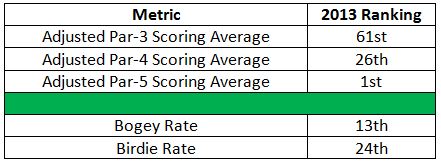
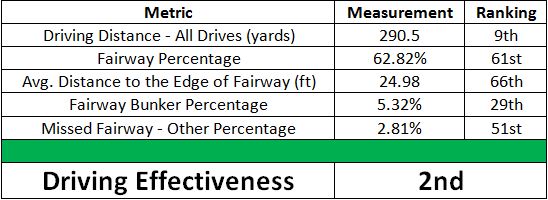

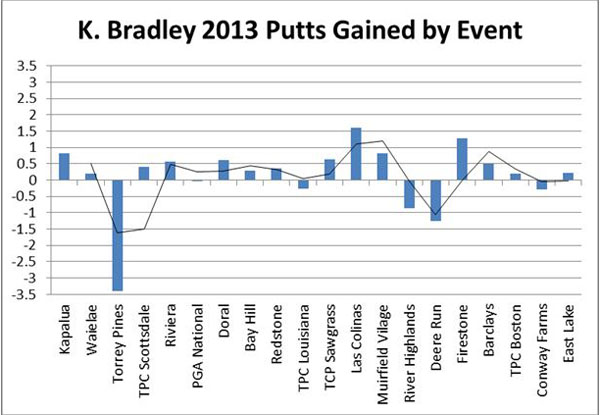















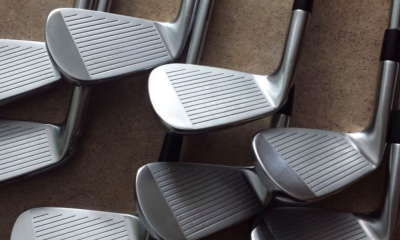
















LY
Jan 1, 2014 at 12:12 pm
Rich:
What a great article! Do you do stat work with the LPGA tour and if so how do their numbers compare to the PGA tour?
LiveWire
Dec 30, 2013 at 5:28 pm
Great Data, I hope KB does better in 2014. I think he does a great job on the course. He has staying power for years to come. Hopefully he’ll win again before the Bo Sox do……
bsoudi
Dec 30, 2013 at 2:59 pm
Interesting analysis. Though it triggers 2 thoughts with me:
1) How important is the “standard deviation” of these stats? I guess I picture that as his consistency.
2) Could insight be gleaned from a comparison of all these attributes – say, could you see that on a great day driving, a player’s putting could be crap, etc.? That way players can get insights to get “all the pieces in place” more often?
Jadon
Dec 30, 2013 at 10:43 am
Wow, very interesting read. I’d like to see the same stats on Zach Johnson, a guy who is on the opposite end of the spectrum; doesn’t hit it a mile but relies on his wedges and short irons to “score” and get the job done. Goes to show you that you don’t have to be a bomber to succeed, what an odd and fun game we play.
Richie Hunt
Dec 30, 2013 at 11:11 am
Jadon, you would be shocked at how Zach got it done this year. He doesn’t hit it long, but his long approach shots (Danger Zone) is where he hit it the best from.
Mark Wells
Dec 30, 2013 at 1:57 am
Wonder why he feels he can’t work on the birdie and safe zone improvement with McClean? Solid and showing improvement otherwise. Time will tell
naflack
Dec 29, 2013 at 10:37 pm
i can see that little move off the ball that keegan does with his head being an issue on those short iron shots. im guessing chuck will want to address that…
Troy Vayanos
Dec 29, 2013 at 5:04 pm
Great post Rich,
Just shows how tough the tour is these days when a guy like Keegan can produce such impressive stats and still not come away with a victory.
Cheers
Richie Hunt
Dec 30, 2013 at 11:12 am
The bigger one is to look at Bo Van Pelt’s metrics from 2012. Outstanding ballstriker and was 11th in Putts Gained. Didn’t record 1 win. I almost found that impossible, but any given week somebody can sneak in and take it away from him.
Juan
Dec 29, 2013 at 12:11 pm
Rich, I really appreciate the great work you do with statistics!! It helps me understand the players you analyze AND a way of thinking about analyzing and improving my own game. BTW, I really like your website. THANKS again for the great work!!
Mike
Dec 29, 2013 at 11:26 am
Rich, great work. I love seeing data like this and a good thorough analysis. I look forward to reading more of your work.
Martin
Dec 29, 2013 at 9:45 am
Cool analysis, I also wonder what will happen when he switches putters.
I played with the same putter Keegan uses and gave it up because it wasn’t good enough on long putts to make up for the bit better it was on short ones. The stats seem to make the same case for Keegan.
Rob
Dec 29, 2013 at 8:16 am
Rich, interesting article, well done. I’m curious if anyone has studied “feel players” that use statistics heavily to engineer changes and what the results have been.
Rich
Dec 30, 2013 at 3:53 am
Could you really classify them as a true feel player if they looked at stats?
Rich
Dec 29, 2013 at 7:34 am
Yes I’m sure Keegan Bradley took all this into consideration when he decided to switch coaches. Actually, perhaps he’s not aware. You should drop him a line to let him know……..
Pingback: Desde el tee: semana 52/2013 | colombiaDeportes.co
Kenny Thomson
Dec 29, 2013 at 5:28 am
Another good article. How does an amateur collect such data without slowing up play? Enjoyed the book.
Kenny Thomson
Dec 29, 2013 at 5:26 am
Good article, but how does an amateur ( reasonably low handicap) capture similar data without slowing up play?
Enjoyed your book
Id
Dec 29, 2013 at 2:55 am
No glaring weakness??? What’s he going to do when he has to quit the belly putter?
Trey Hayden
Dec 29, 2013 at 5:02 am
It’s impossible to predict the future, but Bradley did win most of his college tournaments with a short putter. He switched for the same reason most guys in his generation switched: If they’re gonna let us cheat, we shall cheat.
Rob
Dec 29, 2013 at 8:05 am
You should understand the rules before making stupid comments, He doesn’t have to “quit the belly putter”
Id
Dec 29, 2013 at 10:35 am
He has to quit anchoring into the belly, therefore he has to quit that stroke. He can keep the same length putter, for sure, and use it un-anchored, therefore not calling it a non-belly putter but a putter at 43 inches or whatever – but he has to quit the belly putter. You should understand the comments before trying to sound intelligent.
Richie Hunt
Dec 30, 2013 at 11:14 am
I think I didn’t clarify what I meant by ‘glaring weakness’ anyway. What I meant is when you look at his *scoring* data (par-3’s, par-4’s, par-5’s, bogey rate and birdie rate) there was no glaring weakness there. Obviously he has a glaring weakness in his game…shots from inside 175 yards. As far as the putter goes, we will wait and see how that pans outs.
Sean
Dec 28, 2013 at 9:22 pm
Nice analysis. That right there should tell KB what he needs to work on.
Tom Stickney
Dec 28, 2013 at 7:04 pm
Great analysis Rich. Big fan of your work!
A
Dec 28, 2013 at 5:59 pm
I knew he was an idiot the moment I saw him
Homer Simpson
Dec 28, 2013 at 4:23 pm
“Facts are stubborn things, but statistics are more pliable.”
? Mark Twain
Roger
Dec 28, 2013 at 1:35 pm
Rich, thanks for another Great Article.
I see Luke Donald also moved to Chuck Cook due to his wish to
hit more par 4’s . Did a search of online videos of Chuck Cook
so thanks for the Xmas Present! I’m still young enough to Listen!
From 185 to the Pin is my problem area!
Have a great 2013 Rich.
Richie Hunt
Dec 28, 2013 at 8:46 pm
Thanks for the kind words